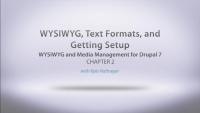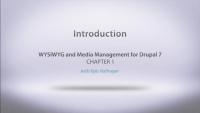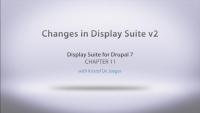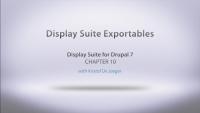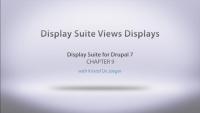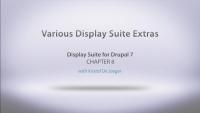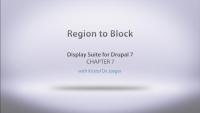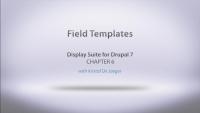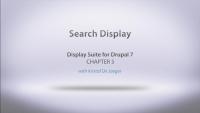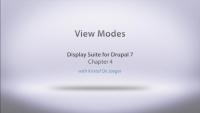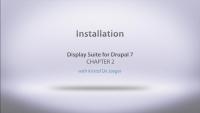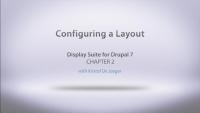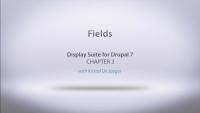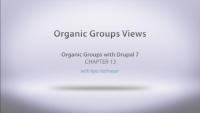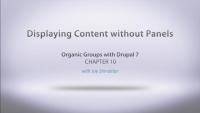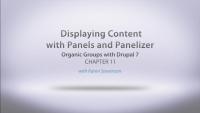In this lesson we cover downloading and installing the WYSIWYG module. We show the relationship between the WYSIWYG editor and Drupal Text Formats. We go over the basic settings of the WYSIWYG module, how to download and install an editor, and configurations necessary in Text Formats to make things work properly.
Use this handbook page on Drupal.org to determine which version of TinyMCE is supported with CKEditor: Editors.
Additional resources
I'm always asked about Drupal: "Where is the editor?" Well, this series is going to answer that and teach you everything you need to know about WYSIWYG.
I’ll cover the WYSIWYG module and other modules that allow us to bring media, especially images, into our content. I'll cover best practices for using a WYSIWYG module, how you can use other modules, and various methods of getting images into your text areas with WYSIWYG or with just an image field, and I'll explain the differences among various methods.
Additional resources
WYSIWYG and Media Management
CourseThis lesson covers all the updates/differences in the latest 2.x version versus other Drupal 7 releases. The new 2.x version of Display Suite is still in active development at the time that this video was published, but we want to make sure you know the changes that are coming when the new version is finally released. This video is very important to view if you are using Display Suite version 2 for the first time and have watched other videos in this series. It covers UI changes/updates as well as feature differences.
Additional resources
In this lesson we cover how all over the configurations we have learned using Display Suite are able to be exported to code. This video shows how to do this using CTool but can also be done with Features as well.
Additional resources
In this lesson we cover another "extra" of Display Suite, Views Displays. This basically allows you to take over a view template file and use Display Suite to layout your views.
Additional resources
In this lesson we cover several extra options provided by the included "Extras" module with display suite. We will show how turning on the Contextual Links extra makes it easier to edit a layout when viewing an entity that is using it. We also look at the Page Title extra that allows you to hide/show the title for a particular layout. Finally we discuss a very powerful feature that allows you to have an option of an end user to select between different view modes.
Additional resources
Region to Block
FreeIn this lesson we learn how you can take a display region and create a block out of it to be placed in Drupal core's block system.
Additional resources
Field Templates
FreeIn this lesson we cover how you can do some powerful things with Display Suite in regards to field templates. Using the Display Suite GUI there are lots of configurations and offerings to get the markup just the way you want.
Additional resources
In this lesson we cover using the search display portion of Display Suite. This allows you to have a custom layout for your search results as well as your user search results. Display Suite offers lots of functionality here that you just can't get with a core configuration of search.
Additional resources
In this lesson we cover how one can use view modes and display suite to allow multiple options of layouts for content display. This allows a user to have a different layout of the same content for different scenarios of the site. Combining this with views and you can start to see the power of display suite in action.
Additional resources
Display Suite for Drupal 7
CourseDisplay Suite is a module that controls the display of your notes, users, comments, and any entity that's available in your system.
In this video, I will cover the installation of the module and some quick overview of all the menu items that will be made available if you install Display Suite, through the three modules that are its components: Display Suite, Extras, and Search Display.
Additional resources
In this lesson we cover the basics of using Display Suite to modify the layout of a particular content type. We cover all the potential templates, adding classes to regions, and lots of configurations to set to taylor the layout to your needs. We also discuss how you can create your own template files and layouts for your own customizations.
Additional resources
Display Suite Fields
FreeIn this lesson we cover adding different type of custom fields to your layout using Display Suite. From adding a custom code field, blocks, to dynamic fields, each of these can be moved around your layout and replicated/modified across different display modes.
Additional resources
In this lesson we cover a module that comes with Organic Groups called "Organic Groups Context". We cover why this module exists, how it helps build out your groups page, and the way it lends a helping hand building out views to make your Organic Groups that much more powerful.
Note: You must first be a member of the organic group referenced by the node for filtering to work. Under relationships, we've selected "OG membership: OG membership" from Node. So if you're not a member of the group referenced by the node, you will get zero results.
Additional resources
In this lesson we give a tour of some of the views that Organic Groups and Organic Groups Extra created and are using. We give a brief understanding of how all the references and relationships can make Organic Groups a confusing thing to grasp.
Additional resources
In this lesson Karen will go into more detail about how the Entity Reference and other group and reference fields work in Organic Groups. She will show how you can add more fields to the membership and display them in Views. Karen will also illustrate how to create additional membership types, like a membership that is intended to be temporary rather than permanent.
Note: This video was recorded using older versions of some of the modules. At the time there where 2 different og_reference* fields that you needed to handle. og_reference and og_group_ref_other_groups_ref, in current versions of the modules used there is just one og_reference field.
Additional resources
In this lesson we take the approach of using the Organic Groups Extra module to spruce up our team pages with relevant content. By itself Organic Groups doesn't do a whole lot to display either a useful groups page or the relationships between a piece of content and the group itself. Instead it relies on modules that are geared towards that specific task like Panels or Organic Groups Extras. Joe shows us how we can use OG Extras to make the group page itself a bit more useful by displaying some additional information like a list of group members and the list of all the content that's been posted in that group.
Additional resources
In this lesson Karen will talk about how to use Panels and Panelizer to display group content in various ways. She will first demonstrate how to use the built-in features that come with Organic Groups to construct a basic group and group panel. She explains how this can be done using the features module. She then demonstrates using the new Panelizer module to create a system where every group can have its own layout and content. Note: Karen enabled the Features module then separately enabled the OG Example feature, which has a dependency on Panels and other modules so basically Features enabled them. If you actually enable that feature on the modules page it will tell you that panels is required and asks to install it. Karen however enabled the Panels modules via the Features admin page.
